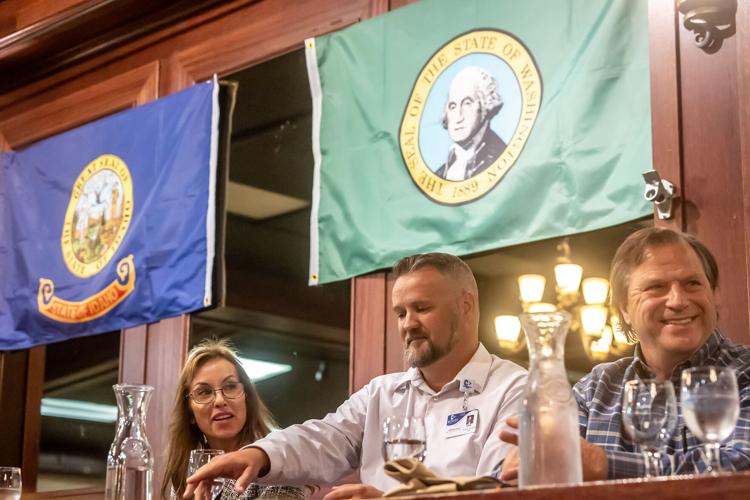
Health care providers race the clock to care for aging population
Listen
(Runtime 1:16)
Read
As the Lewiston-Clarkston Valley’s population ages, the strain on medical providers locally will be especially impactful in primary care, said TriState Health CEO Kym Clift.
Clift was speaking at an Lewis Clark Valley Chamber of Commerce luncheon to discuss how market forces are shaping health care. She spoke alongside St. Joseph Regional Medical Center CEO Ed Freysinger and Catalyst Medical Group CEO Karl Sundberg.
Primary care shortages are being felt across the country in every population, Clift said, but especially in rural areas. The Valley’s high senior population also increases the need for access to specialty care, she said.
“Not just the senior needing to access specialty care, but their family members who need to support them if they have to leave your community to find that care,” she said.
One of the ways health care leaders are trying to stretch their resources is by eliminating noncompete agreements with doctors, Sundberg said.
“We have providers who go back and forth between our organizations, and honestly, in a community like ours, that’s really a good thing. It creates an opportunity for us to bring in more of that specialty,” he said. “They’re just too scarce a resource to have leave communities, and so it’s a good thing when those providers stay, even if they want to change organizations.”
Despite rising costs, Sundberg said, much of which comes from staffing medical centers, Medicare reimbursement has dropped by more than 20% when accounting for inflation. The Lewiston-Clarkston Valley also has a higher than average senior population that’s projected to get older.
One way health care leaders are stretching those dollars, he said, is through automating some administrative tasks using automation technologies.
Hospitals are relying more heavily on advanced practice providers, such as physician assistants and nurse practitioners to support specialty care, Clift said. They’re also using more telemedicine.
“If you’ve never had a televisit, it could be a little bit awkward at first,” she said. “But we find that it’s very, very effective. And we are able to access really skilled, experienced specialists that we never would have had the opportunity to make available to the patients in the LC Valley without this type of model.”
One audience member asked about how social determinants of health, such as where someone lives or their access to transportation, affects health care.
Sundberg said that recently, one senior patient hitchhiked from Lapwai to get to an appointment.
“Our chronic care management team had the ability to not only pay for a cab for her to get home, but also make sure that she had other transportation options and knew how to access (them),” he said. “Those types of resources I know we all have within our organizations.”
But other outside factors that affect patient health are bigger than what health care organizations can address alone, he said.
“There are things that none of our organizations will be able to do,” he said. “Health literacy is a huge disparity within social determinants of health. I know it’s an area that is going to have to get a lot more attention if we are going to really be successful in the future at driving down the cost of health care.”
Part of addressing the Valley’s growing health care needs is through training health care workers, Freysinger said.
“I think another thing that’s going on is all of us are working on, ‘How are we developing and training talent for the future?’” he said.
Freysinger said partnering with nursing programs and bringing in medical residents are important for long-term recruitment.
“The opportunity to bring those students in increases the likelihood of recruiting them to practice in this community,” he said.
One audience member asked about the potential for collaboration with local high schools.
“I think there’s a lot of exciting things that we can do in partnership with not just the high schools, but with the two colleges that we have here,” Clift said. “The challenge is a lot of kids just aren’t aware of all of the opportunities that exist within health care.”
Recruiting and retaining providers is another key part of addressing the Valley’s health care needs, she said, and an area where the community as a whole can help.
“When we recruit physicians, we’re not really recruiting the physician, we’re recruiting the physician’s spouse and their family,” Clift said.















